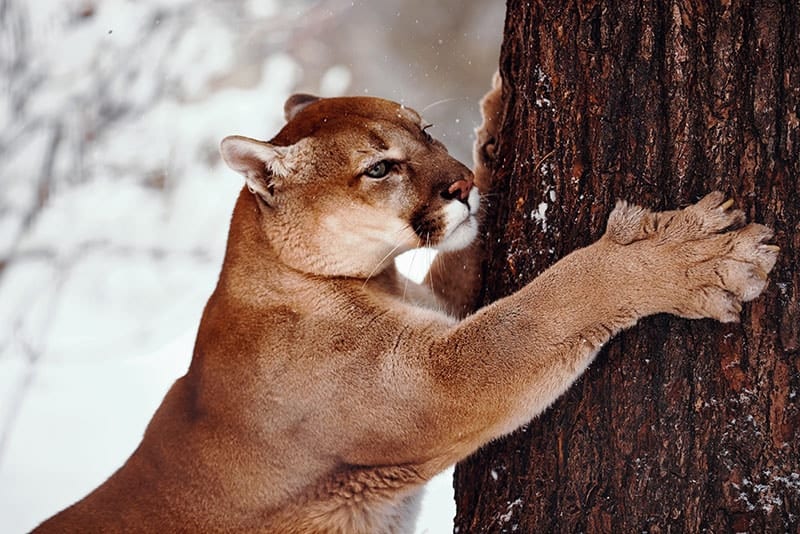Note: This article’s statistics come from third-party sources and do not represent the opinions of this website.
Are you an animal enthusiast? Have you ever wondered which animal is the most dangerous in Canada?
Canada is a diverse country with endless adventure opportunities from coast to coast. With that kind of landscape, it’s no surprise that many creatures live within Canadian borders. However, some of them are so dangerous that even we humans fear them.
But how do you know which creatures to watch out for? In this article, we outline some of the most dangerous animals in Canada alongside shocking statistics about attacks on humans. Statistics are empowering. You can plan for the future and take better precautions.
Click to Skip Ahead:
- Attack Cases by Dangerous Animals
- Provinces/Seasons with Higher Risk of Attacks
- Venomous Animal Attacks in Canada
- Other Aggressive Animals

The 10 Statistics About the Most Dangerous Animals in Canada
- The moose is Canada’s deadliest animal. There are more than 500 traffic accidents caused by moose in Canada annually.
- About 20 to 30 people in Canada are attacked by cougars annually. But, most of these attacks are non-fatal.
- On average, three people are bitten by prairie rattlesnakes in Canada annually.
- There are three times more brown bear attacks in Alberta than in other Canadian provinces.
- There’s a high risk of getting killed by dangerous animals in British Columbia. The most dangerous animals in British Columbia are cougars, bears, and wolves.
- Most grizzly bear attacks occur in July, August, and September when families with young cubs are foraging for food.
- The female black widow spider is a small creature with a body length of only about 1 inch. But its potent venom can be lethal to humans.
- The venom of the massasauga rattlesnake is toxic enough to kill an adult human if injected. But the snake rarely strikes unless provoked.
- Polar bears are aggressive, and they are known to attack humans in response to a perceived threat.
- In Canada, wolves prey on small children.
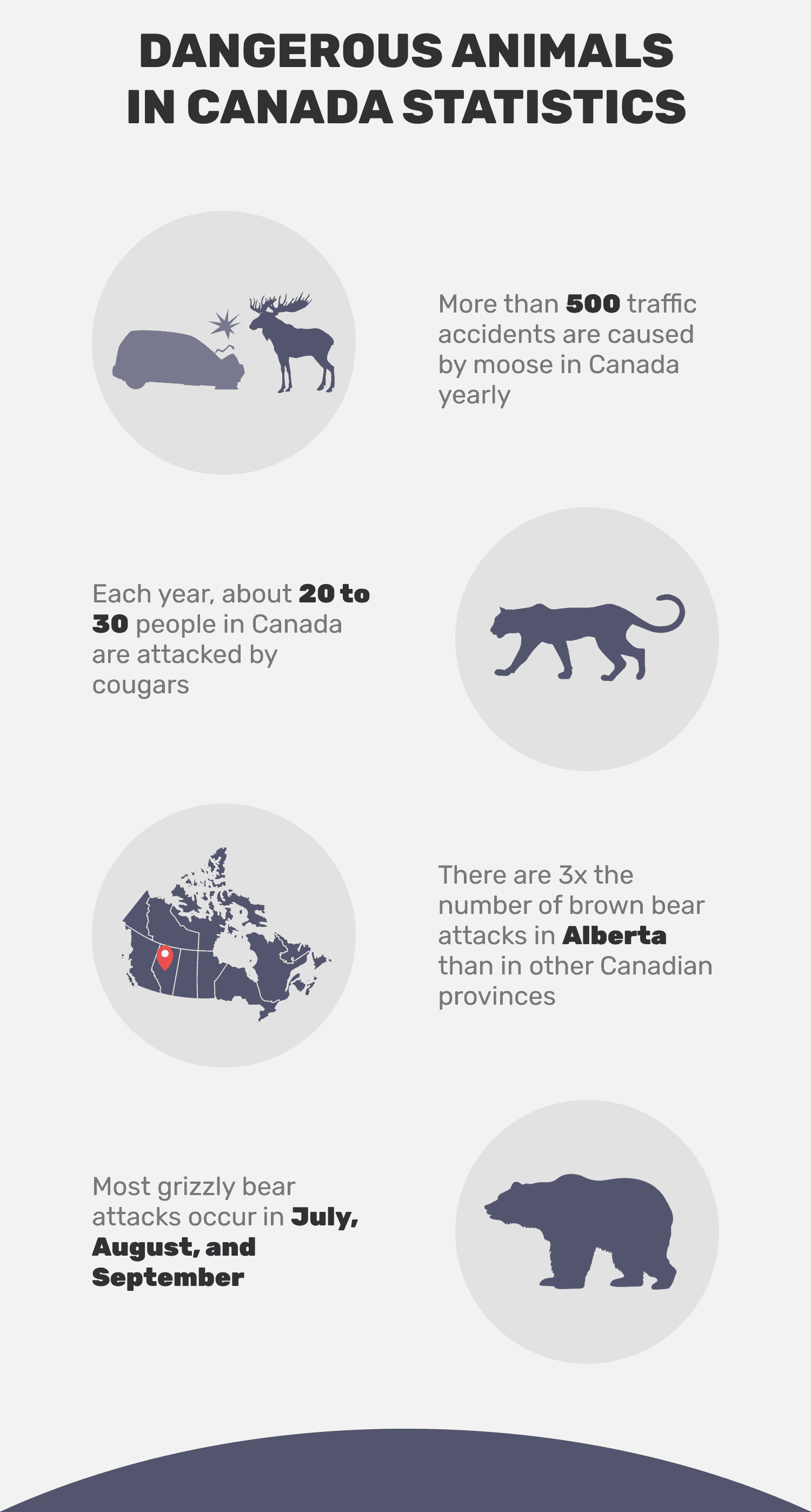

Attack Cases by Dangerous Animals
1. The moose is Canada’s deadliest animal. There are more than 500 traffic accidents caused by moose in Canada annually.
(EUREKALERT)
Moose appear to be harmless creatures. But they can cause a lot of destruction if provoked or involved in an accident. They are attracted to roadsides due to the availability of food dropped by vehicles or thrown away by humans.
Also, they get attracted to the headlights of cars at night. That’s why some believe that moose have excellent night vision capability.
It is estimated that around 500 traffic accidents occur annually as a result of moose collisions with motor vehicles.
To avoid a collision with a moose, slow down and keep your distance. If you see a moose while driving, do not swerve suddenly. It will make it panic and might trigger an attack. Also, do not try to chase after the animal. It can lead to an accident.

2. About 20 to 30 people in Canada are attacked by cougars annually. But most of these attacks are non-fatal.
(RESEARCHGATE)
Cougars are the largest of all the cat species found in North America. They are also known as mountain lions. Cougars are powerful hunters with stealthy stalking abilities, which allow them to move within striking range of their prey. But they are also skilled at climbing trees.
Cougars have been known to attack humans when they feel cornered. Annually, cougars are estimated to attack about 20 to 30 people. It’s also common for them to snatch small pets from their owners’ yards or enter campsites looking for food.
3. On average, three people are bitten by prairie rattlesnakes in Canada annually.
(CANADIAN HERPETOLOGY)
Prairie rattlesnakes are native to a wide swath of Canada. You can find them in southern Manitoba to the Northwest Territories, and even Alberta. This species of rattlesnake is venomous. It can be found in prairies, grasslands, deserts, and forests.
The snake’s range includes many human-populated areas. It’s responsible for an average of 3 bites each year, which is a small number. Also, its venom is not toxic enough to put people at risk of death or severe injury. Although bites are painful and cause redness and swelling, they are treatable with anti-venom.
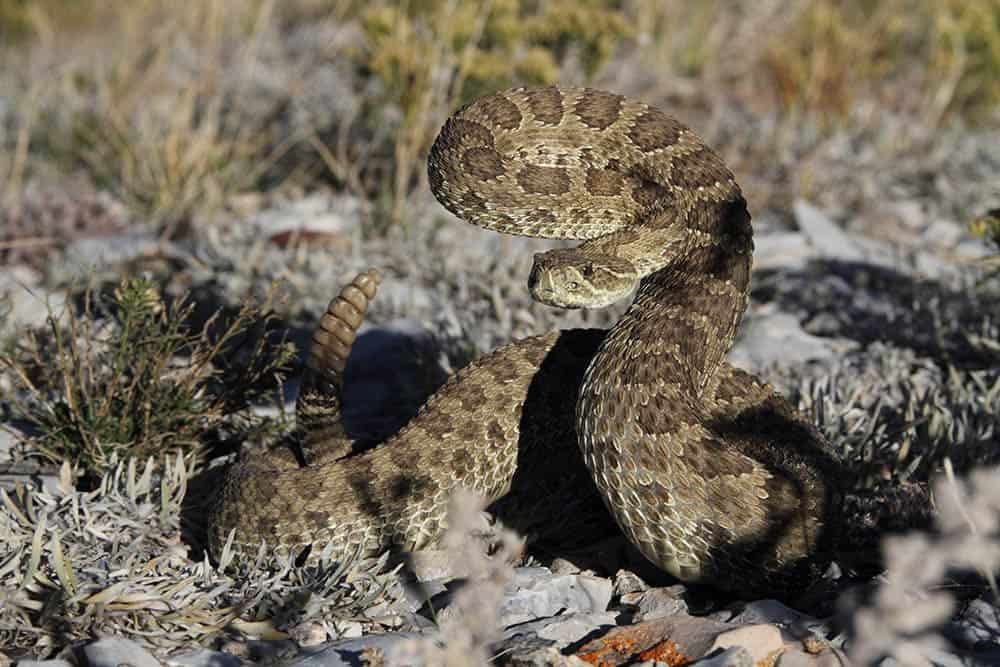

Provinces/Seasons with Higher Risk of Attacks
4. There are three times more brown bear attacks in Alberta than in other Canadian provinces.
(ALBERTA WILDERNESS ASSOCIATION)
Tens of thousands of people live in Alberta and interact with wildlife daily. There is a chance that one of these animals will see them as prey and try to attack or cause them harm. Thus, this province records more cases of attacks compared to other provinces.
Due to the high population of brown bears in the area, it’s crucial to be aware and take precautions when around these animals. Watch out for signs, such as fresh tracks, claw marks, and digging near homes or cabins.
5. There’s a high risk of getting killed by dangerous animals in British Columbia. The most dangerous animals in British Columbia are cougars, bears, and wolves.
(GOV)
The Canadian province of British Columbia is best known for its majestic mountain ranges, breathtaking Pacific Coastline, and many lakes. But for some people in the province, what sticks most in their minds is a less pleasant experience, such as getting attacked and killed by a wild animal.
Cougars are most active at dawn and dusk when they’re hunting for prey. Bears and wolves also roam early in the morning and in the evening. So, avoid early morning and late evening treks. There are many places in British Columbia where you’ll find cougars, bears, and wolves.
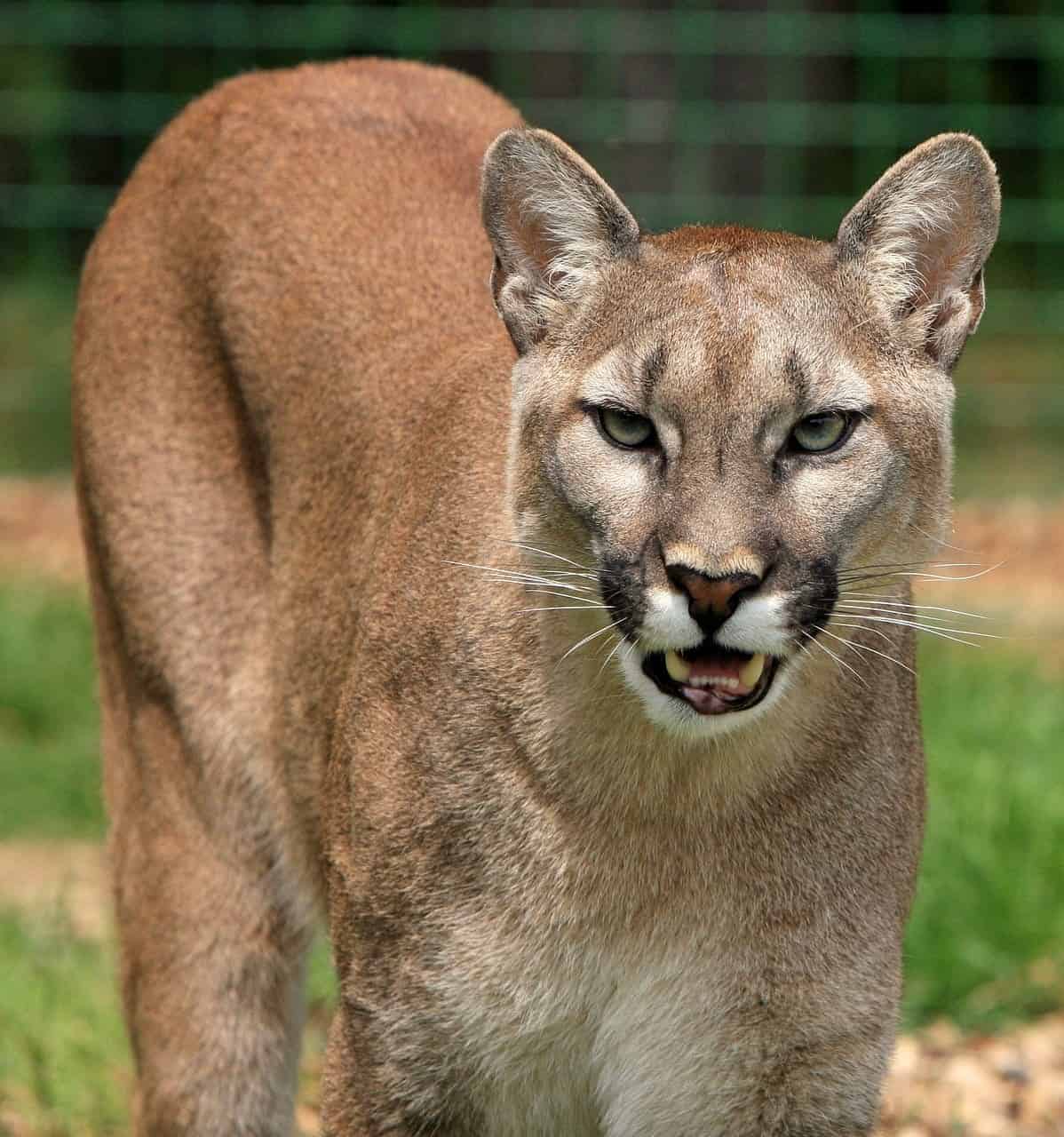
6. Most grizzly bear attacks occur in July, August, and September when families with young cubs are foraging for food.
(JSTOR)
This timing of attacks is related to the seasonal behavior and movements of grizzly bears. July, August, and September are their peak months.
Built-up areas near the wilderness, including towns and national parks, are more dangerous because they attract humans who often have little idea of how to act around bears. Hiking and camping in the bear country requires extra precautions, such as making noise on the trail to avoid surprising a bear.
Grizzly bear attacks are relatively rare compared with other causes of death in the wild. But they draw public attention because of their potential for human fatalities and gruesome injuries.

Venomous Animal Attacks in Canada
7. The female black widow spider is a small creature with a body length of only about 1 inch. But its potent venom can be lethal to humans.
(BRITANNICA)
All spiders have venom glands. But the toxicity of their venom varies between species. The black widow spider has enough venom to kill a human being. There have been documented cases of death after the bite of this spider.
The main toxin contained in the black widow’s venom affects muscle tissue and nerves. Symptoms of envenomation include pain, nausea, vomiting, and sweating that may last for hours or days.
More severe symptoms can result in palpitations, blurred vision, and muscle spasms. It may lead to paralysis and death by respiratory failure in severe cases.
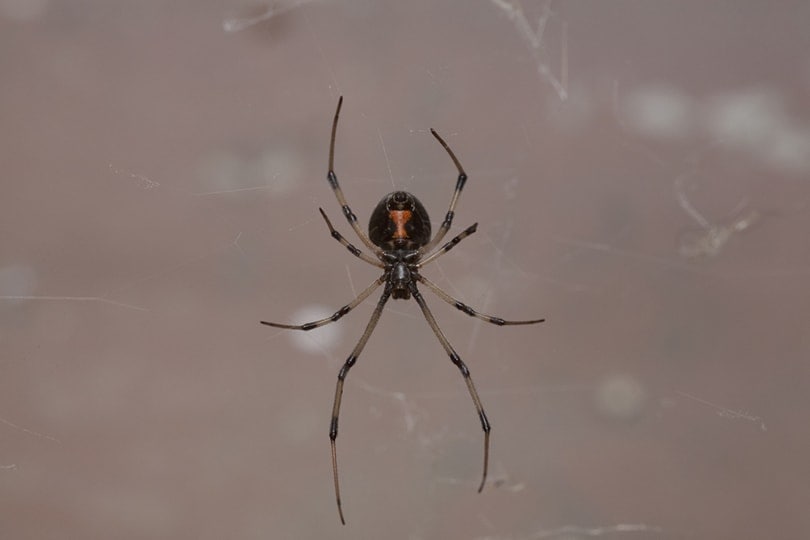
8. The venom of the massasauga rattlesnake is toxic enough to kill an adult human if injected. But fatalities are not common as the snake rarely strikes unless provoked.
(FWS)
The massasauga rattlesnake is a large, heavy-bodied species that has a large, triangular-shaped head and a rattle on the end of its tail. It has a stout body with brown or black blotches on a lighter background. The belly is yellowish-white with spots or speckles.
The toxin from a massasauga rattlesnake bite is not very potent, but it acts fast. The time of the bite to the time of death can be as little as 5 minutes. The venom has been found to stop a person’s respiratory and circulatory system almost immediately. It cuts off blood supply and oxygen to the heart and brain.

Other Aggressive Animals
9. Polar bears are aggressive and are known to attack humans in response to a perceived threat.
(NATIONAL GEOGRAPHIC)
A polar bear is a large carnivore of the order Carnivora living mainly on the ice-covered waters of the northern Arctic region.
Polar bears are known to be aggressive and thus dangerous to humans. They have killed humans in the past, although it is rare.
Most polar bear attacks occur in late summer. An adult bear can kill an adult human with a single swipe of its paw. But polar bear attacks are among the least frequent of all wild animal attacks on humans.
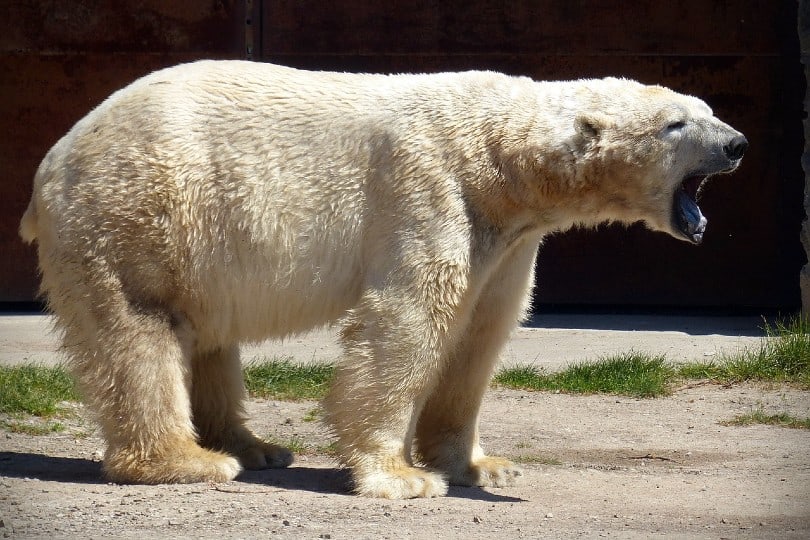
10. In Canada, wolves prey on small children.
(WOLF)
Wolves are the largest member of the canine family. They’re found all over the northern hemisphere, including Canada.
Usually, wolves are shy and avoid human contact. But they will become bolder if they become used to people. Wolves may appear less aggressive than other canines but defend themselves when threatened. They have even been known to prey on small children. With their sharp teeth, they can cause serious injuries.

Frequently Asked Questions (FAQ)
What do you do when a prairie rattlesnake bites you?
There is only one thing to do when this snake bites you: remain calm. This way, you won’t pump more venom into your bloodstream. Do not try to suck out the venom or apply a tourniquet.
Treatment for rattlesnake bites includes using anti-venom. Also, the administration of supportive care will keep you from dying until your body can synthesize its antibodies.
(MAYO CLINIC)
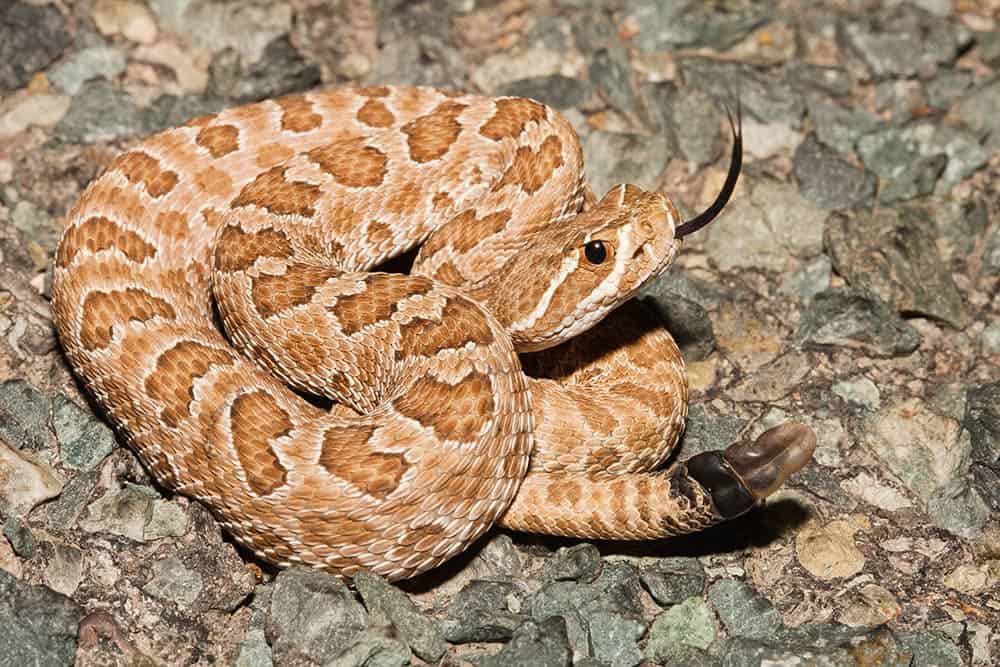
In which Canadian province is the black widow spider found?
The black widow spider is found in the provinces of Ontario and Manitoba. It’s most commonly found in the southern parts of Canada.
It is also found in a few other parts of the world, like parts of Europe, Southern Asia, Australia, Africa, and South America. Usually, they are found in dark places such as woodpiles or among rocks. The black widow spider is the most venomous in Canada. It has a red hourglass on its belly.
(NATURE CONSERVANCY)
What is the difference between the moose and elk?
The moose is much larger than the elk. Both have antlers, but they are different in size. The moose’s antlers can reach up to 6 feet from tip to tip and weigh up to 100 pounds. Elk antlers are generally smaller and lighter than moose antlers.
The moose are members of the deer family and live in forests and swampy areas throughout Canada. The elk is also in the deer family but it is larger than the deer and lives in forested areas of western North America and Siberia.
Where in Canada can you encounter the massasauga snake?
The massasauga rattlesnake is a small, usually inconspicuous snake. It’s found in southern Ontario and Quebec. It is active at night and is often found near water.
Massasaugas are shy creatures by nature and do not like to be around humans. They will try to retreat into the nearest tunnel or burrow if confronted or threatened.
Occasionally, though, they will attack when cornered or provoked. The odds of being attacked by this species are extremely slight. But it’s still crucial to know what it looks like so that you avoid an accidental encounter with the snake. If you see one of these snakes, leave it alone and contact the nearest park office for assistance.

What is the best way to show cougars that you’re not a threat?
Stay calm and stand your ground when you see a cougar. This way, it will know that you’re not a threat. Also, don’t run. Running away may trigger an instinctive “pursuit response” in cougars and lead them to attack.
Don’t crouch down or make yourself look smaller. Back away slowly and keep your eyes on the animal. When you turn your back on it, the cougar may consider this a sign of weakness and attack.
If the animal doesn’t respond aggressively after you’ve shown it that you’re not afraid, then back away slowly. Do it while facing it until it’s out of sight or until you can get to safety.
What bear species is the most aggressive in Canada?
Although the most common bears in Canada are black bears, grizzly bears are the most aggressive. The grizzly bear can reach up to 1,000 pounds and stand as tall as 6 feet. They are more of a threat to humans than black bears.
The grizzly bear has killed more humans than any other species in Canada. Also, it’s the third-largest type of bear on the continent.
The behavior of grizzly bears is affected by their environment, health, and whether they have cubs with them. Grizzlies are aggressive when protecting themselves and their young ones from danger.
Generally, grizzlies will avoid people at all costs. But if you happen to come across one unexpectedly, remain calm. Running away from a grizzly bear will only make it chase after you as they are excellent runners.
(WORLD ATLAS)
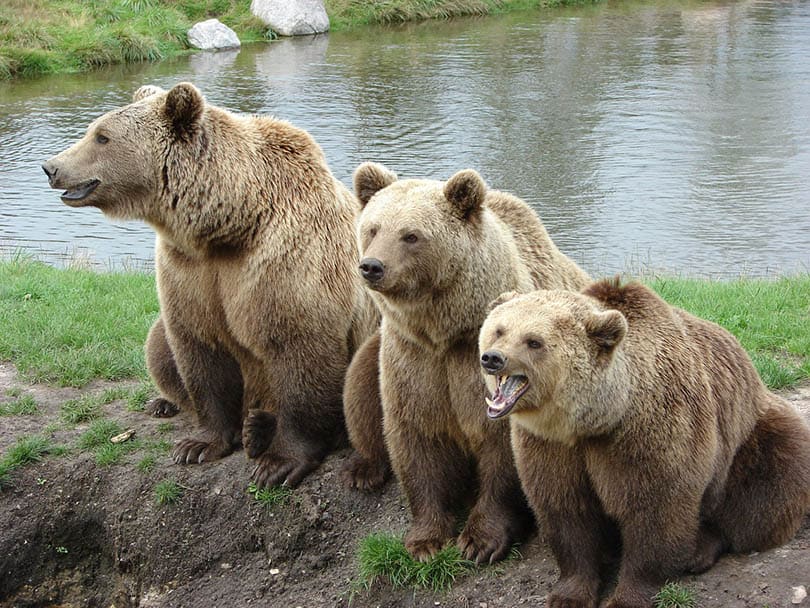
Are baby rattlesnakes riskier than adult rattlesnakes?
No, baby rattlesnakes are not more dangerous than adult rattlesnakes in Canada. Baby rattlesnakes are smaller. So their fangs may only be one-tenth of an inch instead of a half-inch long like an adult’s fangs.
Because their fangs are small, they can’t inject as much venom as an adult can. It would take 100 baby rattlers to put down a single human being.
The reason for this is as snakes grow larger, their venom becomes more concentrated. So, it takes fewer bites from a big snake to do the same damage that would require many bites from a small snake. Baby snakes don’t have enough venom to kill humans.

Signs of Aggression to Look Out for in a Moose (Canada’s Deadliest Animal)
Most people want to avoid moose contact, and for a good reason! Those big antlers can be deadly if you get too close.
There are several signs of aggression in a moose. First, a moose will stop grazing and look at you. Then, it will stand tall on its back legs with its front legs forward and its neck upright. If the moose moves towards you with this stance, it’s showing dominance over you. Do not approach it.
Also, you might notice the moose’s head lowered and its ears pinned back against the head. The moose may make a huffing sound at this time. It means it’s agitated and prepared to attack.
You may also notice that the leaves and twigs around a moose are moved. It does this by its hooves as it approaches you. It means that it is preparing to attack.
If you see these signs, back away slowly. If the moose charges at you, stand your ground and protect your head with your arms. If you’re in a group, stay together. Then, move away quickly from the moose.

Conclusion
The animal kingdom is full of fascinating creatures, each with its unique abilities and personalities. But there are also a few that you’ll want to avoid. If you’re planning to visit Canada soon and are afraid of running into some dangerous animals, there you have it, Canada’s top ten most dangerous animals’ statistics and facts.
Knowing this information may make you think twice before heading into the wild. Or, maybe it will just make you appreciate the wildlife even more. Either way, if you want to save yourself a potential trip to a hospital’s emergency room in the future, make sure you avoid these animals at all costs.
Featured Image Credit: Evgeniyqwm, Shutterstock
